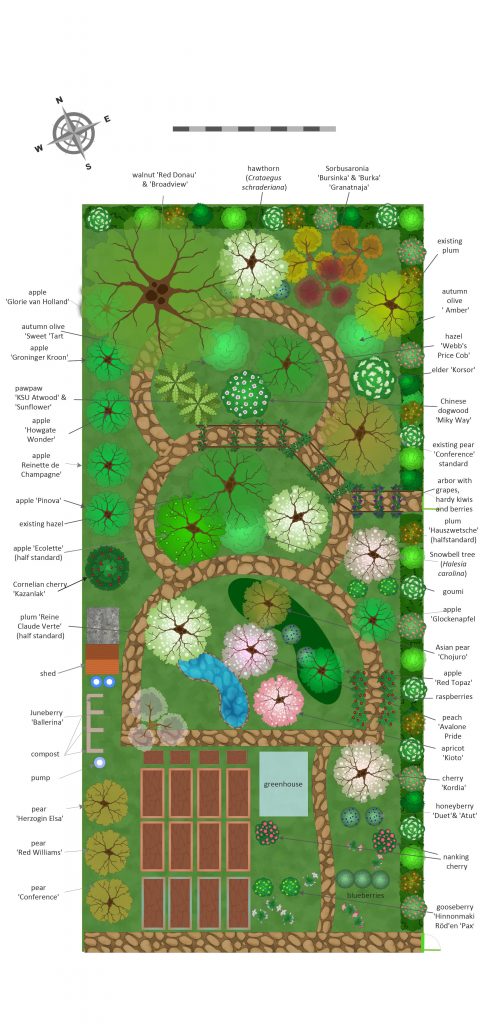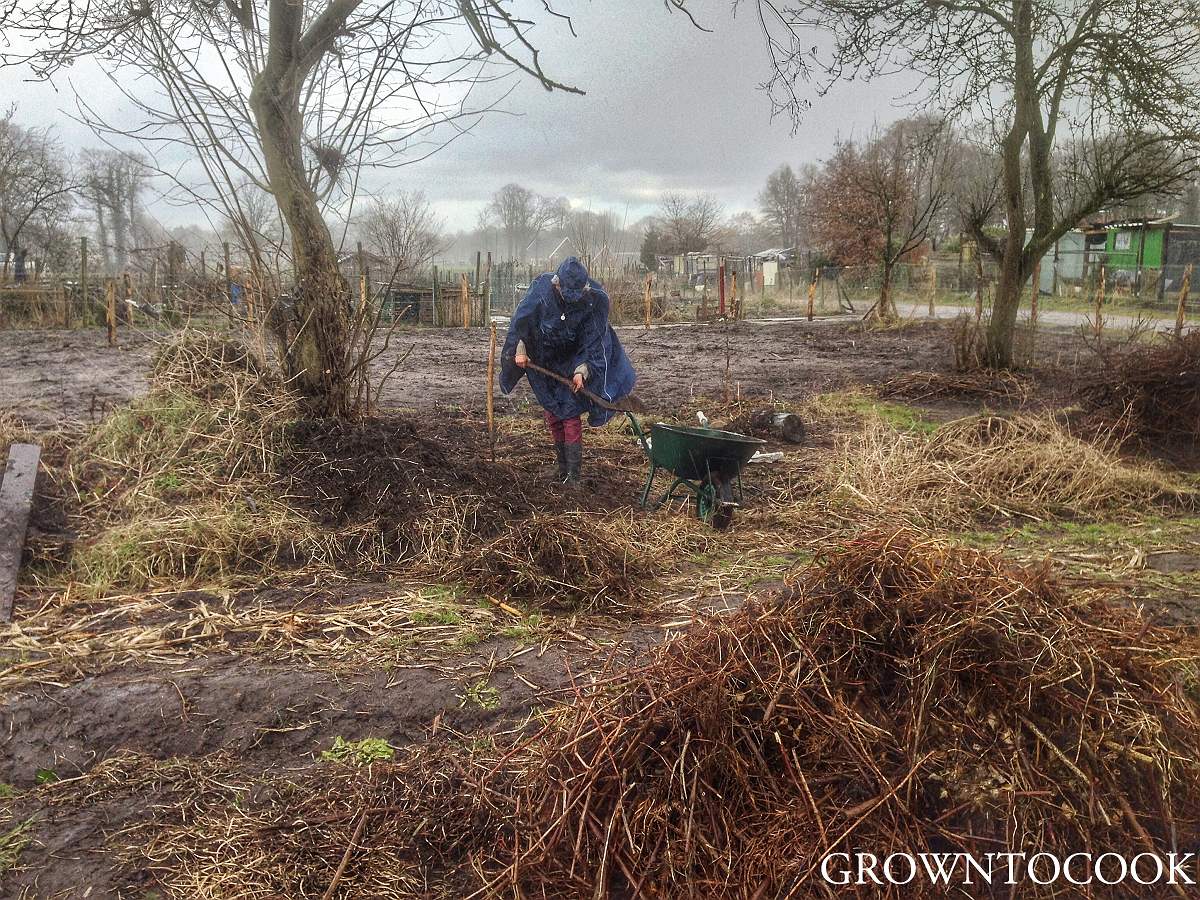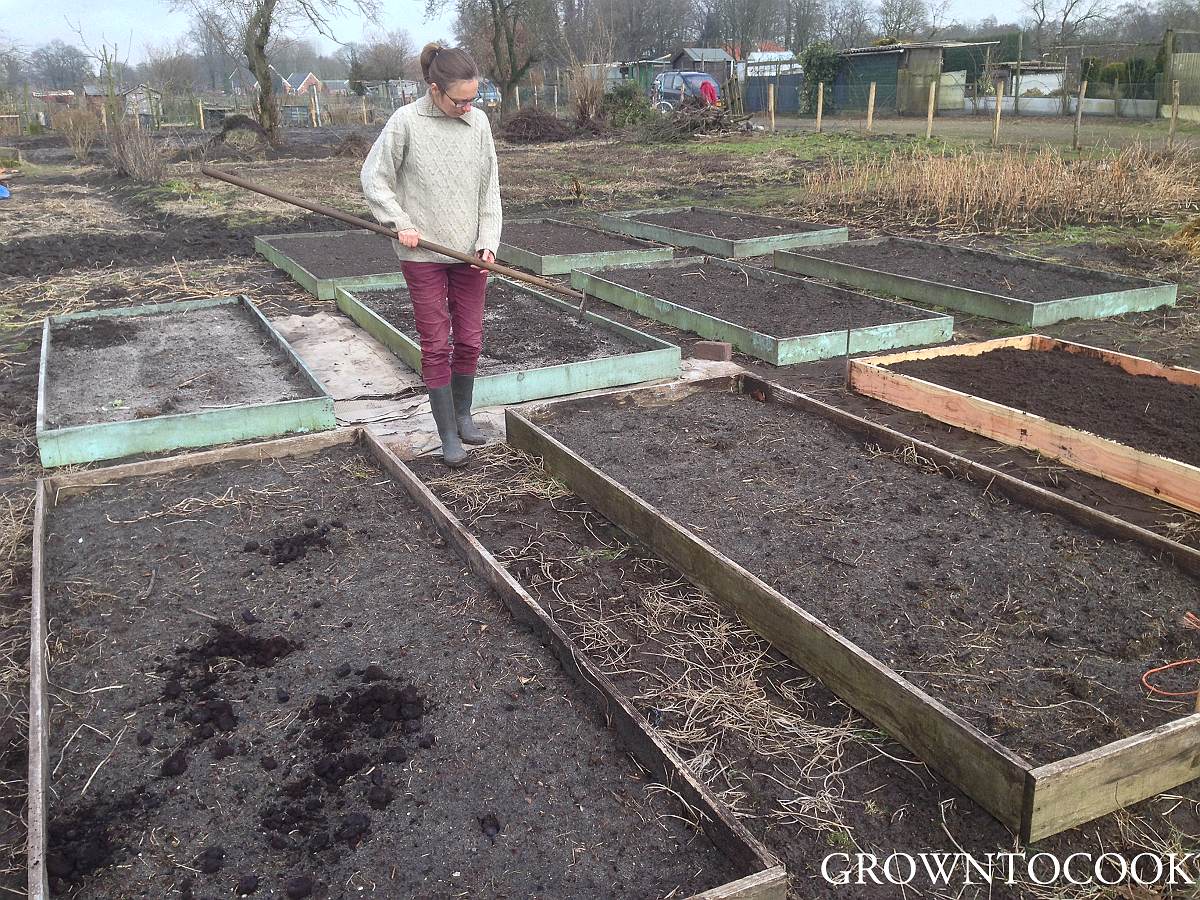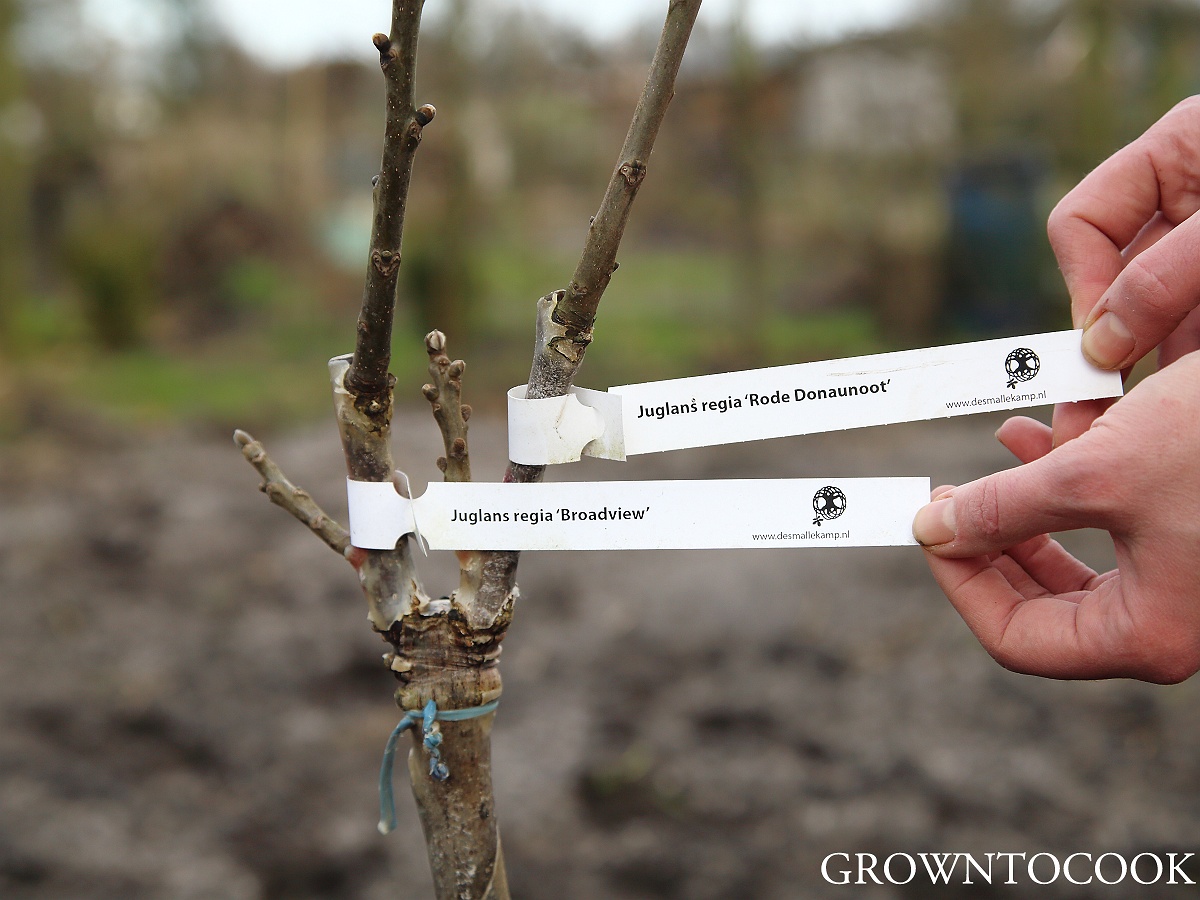Today I would like to share with you the design I’ve created for our new garden. Having a garden of this size is a dream come true and I have spent countless hours pouring over the map and trying to fit in all that I have ever wished to grow but never had enough space for.

First, some basic facts: the plot is rectangular, measuring 21 meters (69 feet) by 46 meters (150 feet). The soil is sandy but the topsoil is quite deep and fairly rich in humus (for sand soil). Prevailing winds are from the south west but the site is not very exposed and there are sheltering trees both south and west of our plot (but not directly next to it). Most of the plot receives full sun. The east & north side border a path and a sand road, the remaining two border other gardens. One of these is also being developed into an edible forest which means there will be good chances of cross-pollination for most species. Plus our neighbours keep bees, which is obviously great for pollination, too. We have consulted each other’s planting lists, and I‘m sure it will also be possible to swap produce (fruit) in the future so that we can both enjoy even more variety.

There are three existing trees: a hazel, a pear and a plum. Both the hazel and the pear are pretty old and very tall (about 6 meters), the plum has been planted more recently and is much smaller. We do not yet know what varieties they are. The hazel is in the middle of the plot and I have long thought about whether to keep it or not. It is a wild hazel, so the nuts are rather small, it does not seem completely healthy and its position has a huge impact on the design. In the end we decided to keep it – it and the pear give a sense of maturity to what would otherwise be a bare field and I’m sure that come summer, we will also be thankful for the shade.
To create some privacy and a sense of enclosure, we will be planting a mixed hedge of mainly native fruiting shrubs: hazel, elder, sloe, dogwood, roses and sea buckthorn. In time this should also create nesting opportunities for birds and become a source of food for wildlife. If they do not eat everything, we might be able to harvest from the hedge too. Plus it will provide a windbreak from the north-east winds, which though not the most common, are the coldest we get.
The southern part of the plot is where we will grow our annual vegetables (and some cut flowers, I hope). We have 12 large raised beds and 4 small ones and hopefully we can also add a greenhouse in the future. Most of the beds are now in place and filled with compost – 6 wheelbarrows to a bed.

The rest of the plot will be planted as an edible forest, moving gradually from the most fussy trees (peach and apricot) to the tougher, wilder plants such as hazel, medlar, hawthorn and rowan. The tree that in time will be the tallest is the walnut and that one is situated in the northern corner of the plot. This tree is the only one we have planted so far and it is a so-called ‘family tree’ with two varieties grafted on a single rootstock: ‘Broadview’ and ‘Red Donau’.

Most of the species and varieties I have chosen should do fairly well in our climate. The biggest gamble is the peach and apricot – it is a risk I am only taking because we love the fruit so much and finding truly ripe peaches and apricots in a store has become impossible. Because of their early flowering, the blossom is very susceptible to frost damage and peach is also susceptible to leaf curl in our rainy climate. Which is why they are getting a prime spot between the pond and a hügel bed we’ll be building from all the plant material we have collected so far. The body of water should modify temperature and help protect the trees from spring frosts. I have also chosen the healthiest varieties available. But we’ll see – ask me again in 5 years!
Scattered throughout the garden we’ll be planting some nitrogen-fixing shrubs (Elaeagnus & sea buckthorn) as a built-in fertilization.
I could go on and on about the reasons behind every decision but will stop here before I bore you to death, but if you have any questions about the design, let me know and I’ll be happy to answer!
See here how what progress we’ve made so far implementing the design:
11 comments for “Design for our permaculture garden”